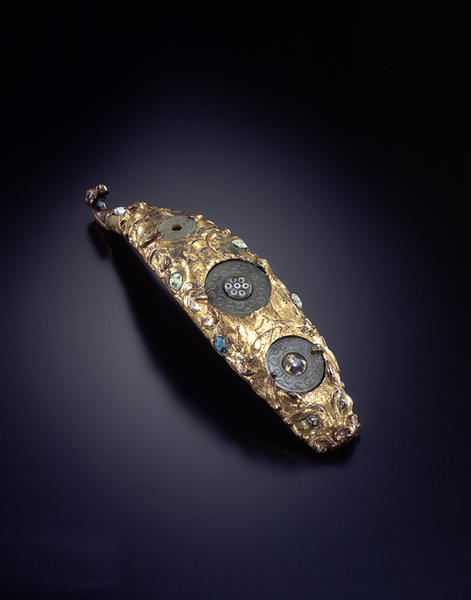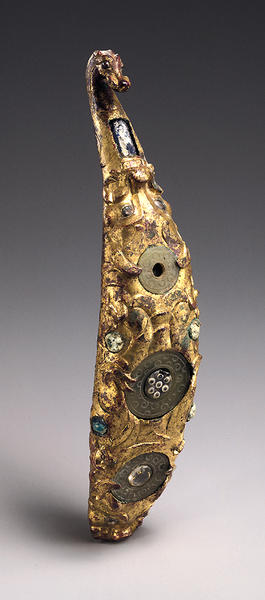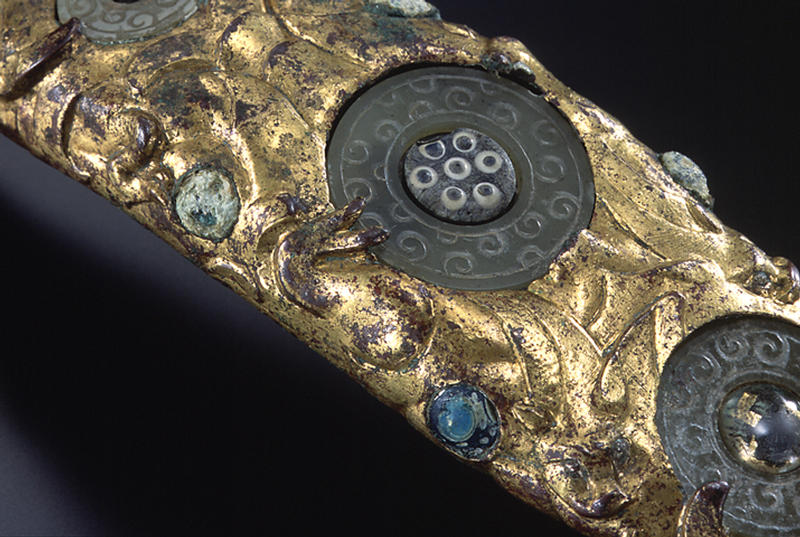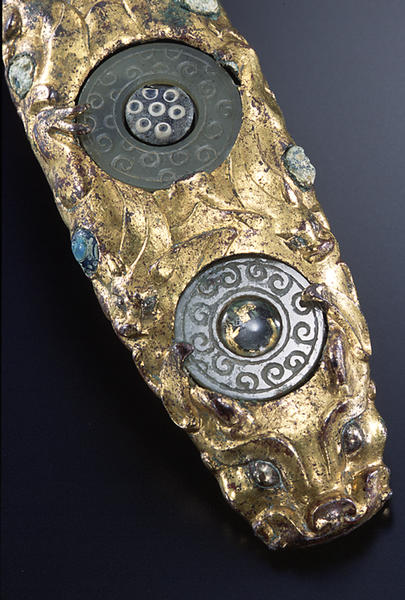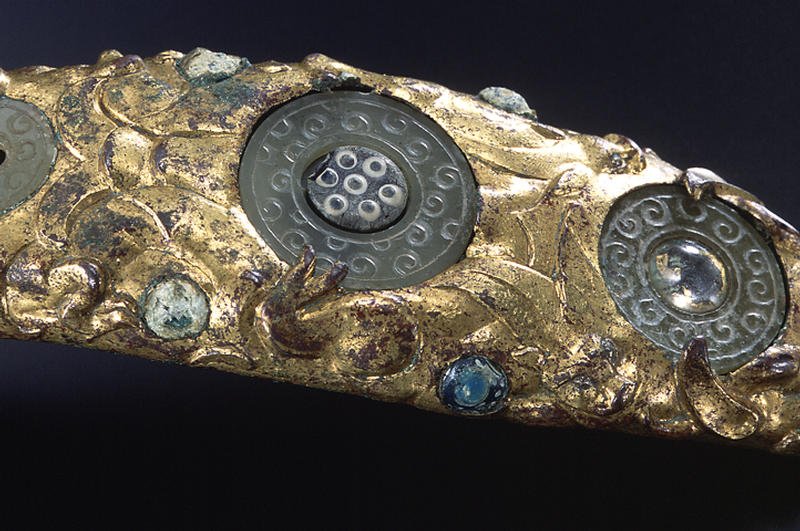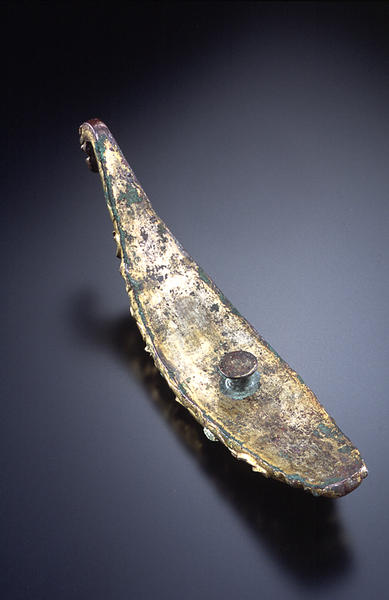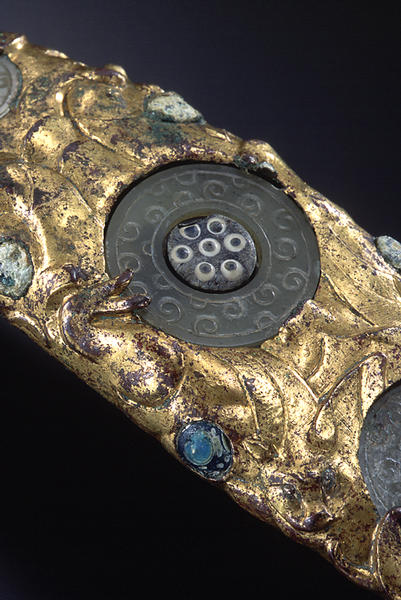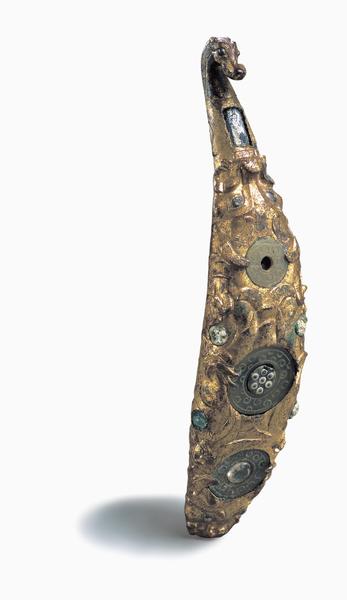Belt Hook
- China
- China, Eastern Zhou period
- 4th - 3rd century B.C.
- Bronze, gold, silver, electrum foil, jade, etc.
- H-22.2
Catalogue Entry
Ornate belt hooks such as this example were a product of the third century B.C. By the end of that century they were out of fashion and are not found in later burials.1 A large belt hook with a similar symmetrical dragon design was discovered in Tomb M5 at Guweicun, Hui Xuan, Henan province.2
This large arched belt hook was hollow cast by the lost-wax process with an intricate medley of intertwined dragon-like forms that appear to undulate over the surface. The hook itself is cast in the shape of an attenuated dragon head on a long neck, which emerges from the mouth of a much larger dragon, whose body merges with that of a short-muzzled creature whose head is placed at the opposite end from the hook.
The bronze surface was mercury foil gilded. After gilding, it was further enriched by very fine engraved lines that lend texture to certain areas on the dragons' bodies. By contrast, the two sets of eyes were accented with a silver foil overlay, most probably adhered by mercury. The back of the belt hook was engraved with a very fine linear design of a sinuous dragon that curls and coils its way over the surface after being mercury foil gilded using electrum. (Electrum is a naturally occurring alloy of gold and silver that ranges in color between shiny white and pale yellow.) A round stud for attachment is set in the middle of the back.
Three annular jade disks engraved with spiral motifs mark the spine of the wide, bulging body of the belt hook and are held in place by various dragon appendages. The spirals on the disks are carved in such a way that no adjacent spirals turn in the same direction, a feature also noted on a late-Warring States jade in the Freer Gallery of Art, Smithsonian Institution, Washington, D.C.3 There are four colorful glass inlays: a blue one in the rectangular cell below the hook; one in the central holes of the middle of the three jade disks; and two on each side of the body of the belt hook. The glass set into the middle disk is dark blue and has a rosette design of seven white-rimmed blue eyes. It has a projecting stem underneath that fits into the central perforation in a jade disk set below the top disk, anchoring it in place. The disk in the lower part of the garment hook is set with a polished hemispherical rock crystal backed with gold foil. The inlay for the top disk is missing, but remnants of what was probably a jade disk are visible.
ECB
1. Lawton 1982, pp. 122-23, no. 72; Wang 1985, fig. 3.2.
2. Hui Xian fajue baogao 1956, p. 104, fig. 123, pl. 74; Yang 1987, pl. 23.
3. Lawton 1982, p. 172, no. 123.
